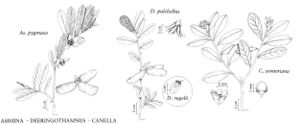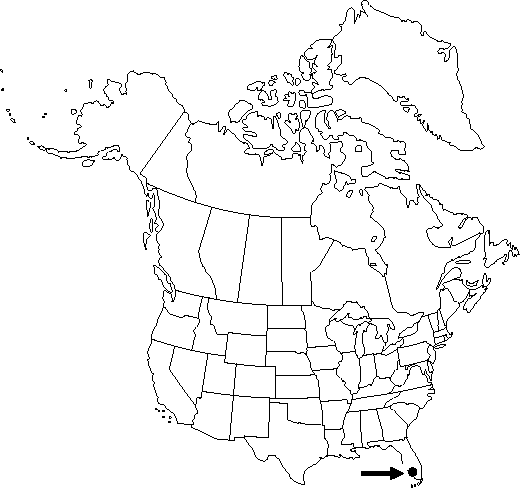Difference between revisions of "Deeringothamnus pulchellus"
Bull. Torrey Bot. Club 51: 390. 1924.
FNA>Volume Importer |
FNA>Volume Importer |
||
| Line 30: | Line 30: | ||
}}<!-- | }}<!-- | ||
| − | --><span class="statement" id="st- | + | --><span class="statement" id="st-undefined" data-properties=""><b>Leaves:</b> petiole 2-4 mm. <b>Leaf</b> blade spreading-ascending, mostly elevated above shoots, oblong to oblong-ovate or spatulate, 4-7 cm, base cuneate to narrowly rounded, margins narrowly revolute, apex obtuse to broadly rounded, often notched. <b>Inflorescences</b>: peduncle slender, 1-3cm. <b>Flowers</b> nodding to ascending, white to pale pink, sweetly fragrant; sepals 2-4, erect, ovate-triangular, ca. 5 mm; petals 6-12(-15), ascending to apically recurved, linear or narrowly oblong, 2-3 cm × ca. 2 mm; pistils (1-)5(-7). <b>Berries</b> 4-7cm. <b>Seeds</b> 1-1.5 cm, slightly flattened laterally.</span><!-- |
-->{{Treatment/Body | -->{{Treatment/Body | ||
| Line 68: | Line 68: | ||
|publication year=1924 | |publication year=1924 | ||
|special status=Conservation concern;Endemic;Selected by author to be illustrated | |special status=Conservation concern;Endemic;Selected by author to be illustrated | ||
| − | |source xml=https://jpend@bitbucket.org/aafc-mbb/fna- | + | |source xml=https://jpend@bitbucket.org/aafc-mbb/fna-data-curation.git/src/9216fc802291cd3df363fd52122300479582ede7/coarse_grained_fna_xml/V3/V3_751.xml |
|genus=Deeringothamnus | |genus=Deeringothamnus | ||
|species=Deeringothamnus pulchellus | |species=Deeringothamnus pulchellus | ||
| − | |||
| − | |||
| − | |||
| − | |||
| − | |||
| − | |||
| − | |||
| − | |||
| − | |||
| − | |||
| − | |||
| − | |||
| − | |||
| − | |||
| − | |||
| − | |||
| − | |||
| − | |||
| − | |||
| − | |||
| − | |||
| − | |||
| − | |||
| − | |||
| − | |||
| − | |||
| − | |||
| − | |||
}}<!-- | }}<!-- | ||
-->[[Category:Treatment]][[Category:Deeringothamnus]] | -->[[Category:Treatment]][[Category:Deeringothamnus]] | ||
Revision as of 13:48, 27 July 2019
Leaves: petiole 2-4 mm. Leaf blade spreading-ascending, mostly elevated above shoots, oblong to oblong-ovate or spatulate, 4-7 cm, base cuneate to narrowly rounded, margins narrowly revolute, apex obtuse to broadly rounded, often notched. Inflorescences: peduncle slender, 1-3cm. Flowers nodding to ascending, white to pale pink, sweetly fragrant; sepals 2-4, erect, ovate-triangular, ca. 5 mm; petals 6-12(-15), ascending to apically recurved, linear or narrowly oblong, 2-3 cm × ca. 2 mm; pistils (1-)5(-7). Berries 4-7cm. Seeds 1-1.5 cm, slightly flattened laterally.
Phenology: Flowering late winter–spring, all year on disturbance.
Habitat: Sandy peats of slash pine-palmetto flats, savannas
Elevation: 0-50 m
Discussion
Of conservation concern.
Deeringothamnus pulchellus commonly associates with Asimina reticulata and overlaps with that species in flowering times; no hybrids between them have been observed. When protected from fire, the elongate and branching shoots of D. pulchellus and D. rugelii will persist, but such new growth rarely produces flowers. A conservation measure for such species must involve periodic burning.

